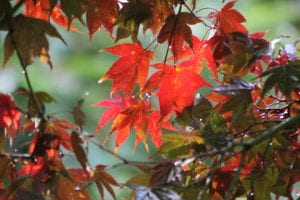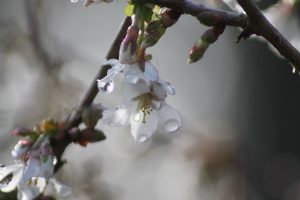By Andy Winfield
Summer is well and truly behind us, a summer unlike any that we’ve had before, and winter is ahead; we’re at the conduit between the seasons, a junction that was highly significant to our ancestors in what we now call Halloween.
 Halloween hasn’t always been Halloween, it used to be called Samhain, pronounced sow-inn, originating from Celtic Paganism. The dying of the season, trees going dormant and harvest behind them, was thought to be the time of the year when the veil between the living and dead was at its thinnest; because of this relatives and friends who had passed that year were invited to share in the festivities, food was left around in case they were passing through. It was a time of honouring the dead, a time of the celebration of life and death and the link between the two. The symbolism of the passing of summer into the darker days of winter is hard to ignore; the trees display echoes of the summer just gone which fall to the ground, you can stand looking one way and see the vibrancy and health of summer and the other to see the desolate beauty of winter ahead. Fires were lit to symbolise the warmth and light of the sun and people would take the flames of this bonfire back to their homes to light their home fires from the communal one, cementing their reliance on each other. In the homes rosemary, the herb of remembrance, would be displayed wafting its evocative scent. (more…)
Halloween hasn’t always been Halloween, it used to be called Samhain, pronounced sow-inn, originating from Celtic Paganism. The dying of the season, trees going dormant and harvest behind them, was thought to be the time of the year when the veil between the living and dead was at its thinnest; because of this relatives and friends who had passed that year were invited to share in the festivities, food was left around in case they were passing through. It was a time of honouring the dead, a time of the celebration of life and death and the link between the two. The symbolism of the passing of summer into the darker days of winter is hard to ignore; the trees display echoes of the summer just gone which fall to the ground, you can stand looking one way and see the vibrancy and health of summer and the other to see the desolate beauty of winter ahead. Fires were lit to symbolise the warmth and light of the sun and people would take the flames of this bonfire back to their homes to light their home fires from the communal one, cementing their reliance on each other. In the homes rosemary, the herb of remembrance, would be displayed wafting its evocative scent. (more…)
According to a report by the Royal Botanic Gardens at Kew in 2016, there are around 391,000 species of plants in the world and around 94% of these are flowering plants. Plants are grouped in families based on their physical and genetic characteristics. One of the largest flowering plant families is the Orchidaceae, or Orchid family with around 28,000 species, so around 10% of all flowering plant species. Recent DNA research shows that at over 90 million years old, orchids are amongst the most ancient of the flowering plant families. (more…)



